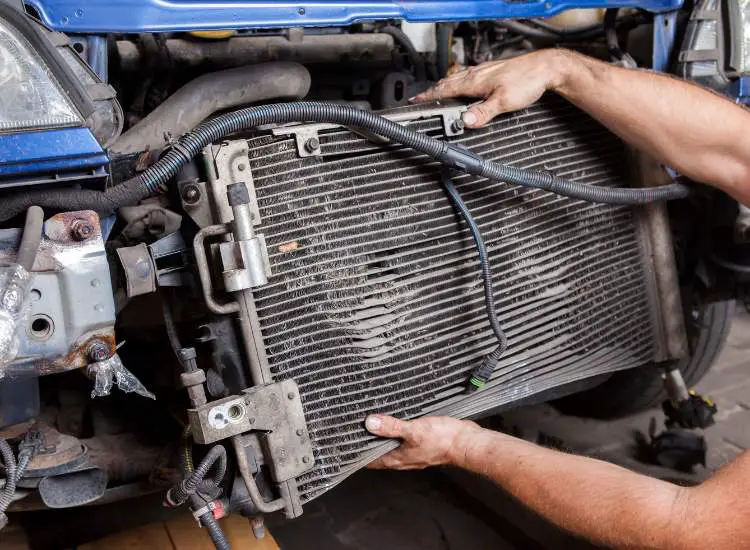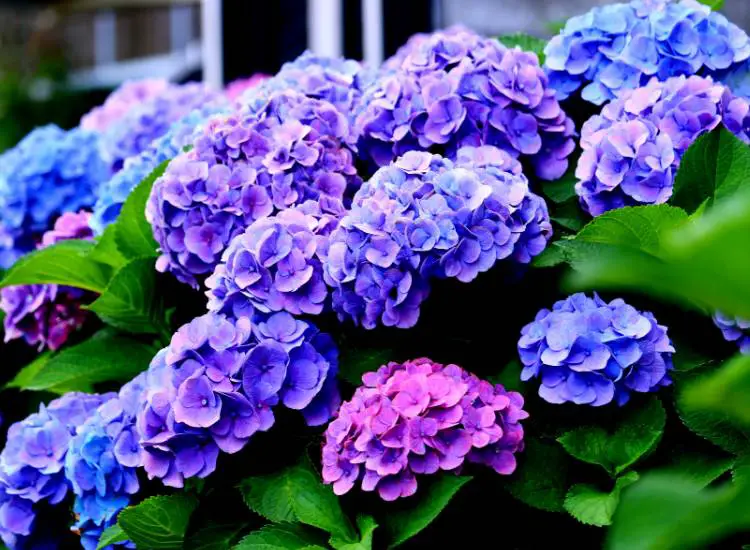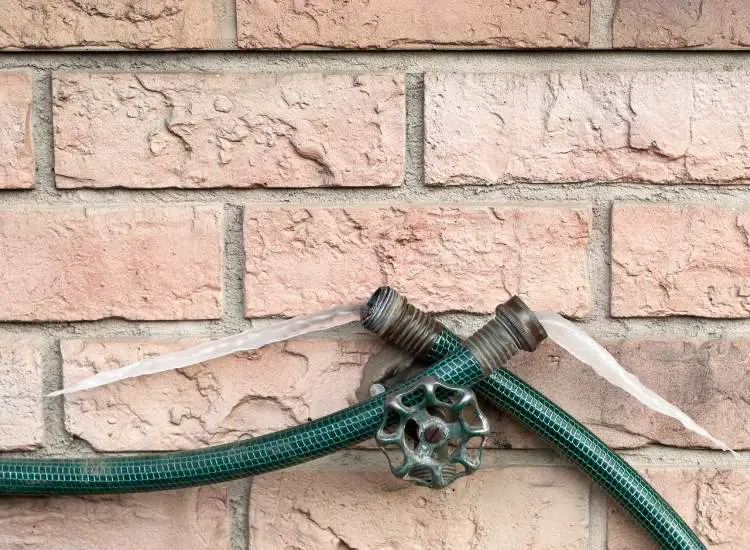How to Drain a Pool with a Garden Hose
Draining a pool may seem like a daunting task, but it’s actually quite simple. You’ll be surprised by how you can save time and resources with a regular hose. So, if you want to learn how to drain a pool with a garden hose, continue reading.
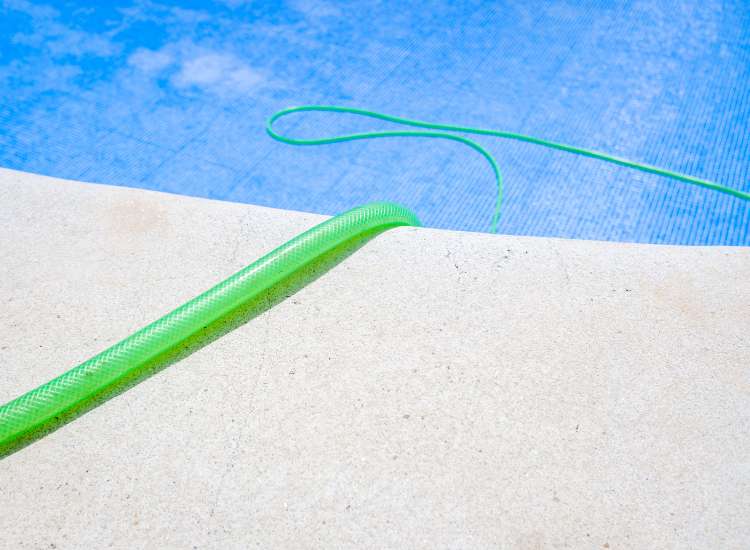
When it’s time for a pool cleaning or when the need arises to empty the pool for maintenance, using a garden hose can be a practical choice. Don’t worry, we’ll guide you through the process and have your pool drained efficiently.
Understanding Your Pool’s Drainage System
To drain your pool using a garden hose, you first need to be familiar with your pool’s drainage system. Typically, pools have a main drain at the bottom and one or more skimmer drains on the sides.
Your pool’s main drain connects to your pool’s filtration system, ensuring that water circulates and stays clean. The skimmer drains help remove debris like leaves and dirt from the water’s surface.
To successfully use a garden hose for draining, you need to create a siphon effect. This requires submerging the hose into the pool water while both ends of the hose are plugged.
After the hose is full of water, keep one end submerged in the pool and place the other end at a lower elevation (usually nearby). Release both ends, and the siphoning effect will start, draining the pool water gradually.
Remember, the draining process can take a significant amount of time depending on the pool size and garden hose used. Be patient and monitor the process carefully to avoid any mishaps. Additionally, be mindful of local regulations regarding pool water disposal, as it may contain chemicals harmful to the environment.
Starting the Process

Materials Needed
To start draining your pool with a garden hose, you’ll need the following items:
- A garden hose of sufficient length to reach from the pool to the discharge area
- A submersible pump (optional, can speed up the process)
- A flat, stable surface for your hose to lie on
Locating Your Pool Drain
First, locate your pool’s drain. It’s typically at the pool’s lowest point, near the bottom. Make sure the drain is clear of debris to prevent any clogs during the process. If you can’t find the drain, consult your pool’s manual for guidance.
To initiate the siphon effect, place one end of the hose in the pool, submerging it until it fills with water. Then, place the other end of the hose on the ground, below the water level in the pool. Ensure the hose has no kinks or bends to facilitate a smooth flow of water.
Now, you’re ready to start draining the pool with a garden hose.
Draining The Pool With A Garden Hose
Draining your pool with a garden hose is an easy and cost-effective method. It may take some time, but it’s simple to do.
Creating a Siphon
First, submerge one end of the hose into the pool. Ensure it is below the water level. Next, connect the other end of the hose to a faucet and turn it on briefly. This will fill the hose with water. Once full, quickly disconnect it from the faucet.
Now, place the disconnected end at a lower elevation than the pool’s water level. Ensure that end is secured and won’t move. The water will begin to flow out through the hose, creating a siphon.
Continue draining the pool until the desired water level is reached. To stop the siphon, simply lift the submerged end of the hose above the water level. Now, your pool is successfully drained using a garden hose!
Post-Drainage Tasks
Inspecting Your Pool
After you’ve drained your pool, it’s crucial to inspect it for any damage or issues. Check the pool surface for cracks, tears, or fading that might need attention.
Refilling Your Pool
Before you start refilling your pool, make sure to clean any debris that has settled at the bottom. Once it’s clean, use your garden hose to start refilling the pool. Monitor the water level and ensure that it fills up evenly.
Remember to check and balance your pool chemicals after refilling, as this is essential for maintaining a safe swimming environment.
Troubleshooting Common Problems
Having trouble draining your pool with a garden hose? Don’t worry, we got you covered. Let’s go through some common issues and their solutions.
Problem: The water isn’t flowing through the hose.
Solution: Check if there’s a kink in the hose or if debris is causing a blockage. Straighten the hose and flush it out.
Problem: The water flow is slow or inconsistent.
Solution: Ensure that the hose is properly submerged and that there are no air bubbles trapped inside. Shake the hose gently to release any trapped air.
Problem: The water stops flowing before the pool is completely drained.
Solution: This can happen if the water level in the pool is lower than where the hose is discharging. Try positioning the hose outlet on a lower level or extend the hose to reach a lower surface.
Frequently Asked Questions
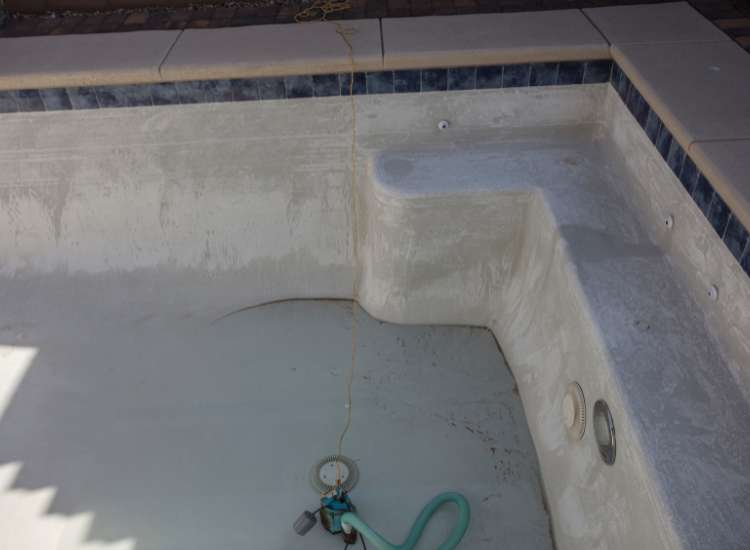
What is the best method to siphon water using a garden hose?
To siphon water with a garden hose, first submerge the entire hose in the pool, filling it with water. Next, tightly cover one end of the hose with your hand, quickly pull it out of the pool, and place it below the water level at a suitable drainage spot.
Which adapter do I need to connect a garden hose to a pool drain plug?
To connect a garden hose to a pool drain plug, you typically need a 1.25″ or 1.5″ threaded adapter. Check the size of your pool’s drain fitting and buy a matching hose adapter from a pool supply store or online.
Is it possible to drain an above ground pool quickly using a garden hose?
Draining an above-ground pool using a garden hose is possible, but it usually takes longer than using a submersible pump. To speed up the process, consider using multiple garden hoses or connecting your hose to a water pump.
Can you recommend a submersible pump for draining a pool?
A suitable submersible pump for draining a pool is the Wayne 57729-WYNP WAPC250 Pool Cover Pump. It’s an automatic pump with a maximum flow rate of 3,000 gallons per hour, which will help you drain your pool more efficiently.
How do I properly drain an inground or above ground pool using a garden hose?
To properly drain an inground or above-ground pool using a garden hose, first locate a suitable drainage area downhill from the pool. Then, siphon the water using the garden hose, monitoring the flow to avoid flooding or erosion. Check your local regulations on pool drainage before starting.
Approximately how long will it take to drain my pool with a garden hose?
Draining time depends on pool size and hose diameter, but it’s generally a slow process. For example, using a 5/8″ garden hose with a flow rate of 9 gallons per minute, it would take about 24 hours to drain a 13,000-gallon pool. Adjust your expectations based on your hose and pool size.
More Garden Hose Articles
- How to Measure Garden Hose Size
- Is Hose Water the Same as Tap Water?
- How to Store an Expandable Hose
- Increasing Water Pressure in a Garden Hose
- How to Remove a Metal Hose Connector
- Keep a Garden Hose from Freezing
- How Long to Fill up Pool with Garden Hose?
- How to Flush a Radiator with a Garden Hose
- How to Shorten a Garden Hose



